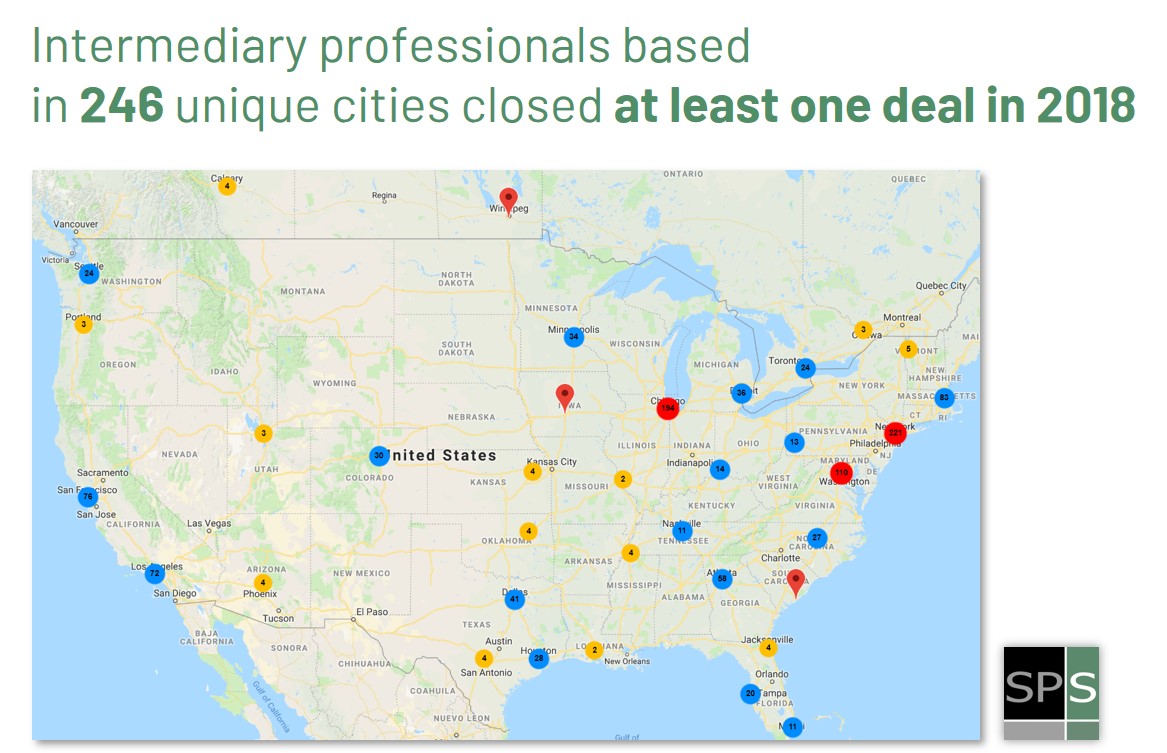2019 is off to a strong start for many capital markets firms, and U.S. GDP growth predictions show no signs of slowing. In an effort to take advantage of the strong economic climate, many private equity firms, credit firms, and corporate development departments are thinking more critically about their data and reporting capabilities.
Each day, hundreds of firms consult with DealCloud on how to be more competitive in this crowded market, and most proceed with configuring their deal and relationship management capabilities to better suit the growing needs of their firm. Most firms we speak with are trying to make better use of third-party data alongside their proprietary intelligence. In this article, we explore three key areas that, when supported by best-in-class third-party data, can transform ordinary gatherings such as Monday morning meetings into high-powered, insightful strategic sessions that can help move the needle for your firm.
1. Intermediary movement
With thousands of investment banks and M&A advisors in the U.S. and even more worldwide, it’s easy to understand why most buyers and lenders have a hard time keeping track of who’s who. But just because there are a lot of bankers doesn’t mean maintaining those relationships is any less important. By using LinkedIn, email marketing, and the third-party data found in your CRM, it’s easy to keep track of when investment bankers, brokers, and advisors switch from one firm to another.
If you learn that a banker has moved to a new firm, or that the firm has dissolved altogether (see below) it’s important that you capture his/her new contact information and focus (based on industry, deal size or type, geography, etc.). Private equity professionals, lenders, and corporate development teams should regularly review these banker movements at Monday morning meetings, as well as keep that data up-to-date in weekly reports. In doing so, teams can better identify potential weaknesses, observe hiring trends, and build new coverage models.

2. Spin-off firms
Similar to tracking the departures of bankers from one firm and their arrival somewhere new, sponsors and lenders should keep a keen eye on the new firms being created and the deals they’re bringing to the market. The trend is clear: most intermediaries are doing just a few deals a year. In fact, according to a recent report from Sutton Place Strategies, over 70% of intermediaries closed three or fewer deals in 2018, making it even harder for sponsors to track and maintain relationships with these firms.
The value of tracking when new firms are formed is that sponsors and lenders can use the move as a conversation starter, and it can be used to re-orient the relationship/re-establish mutual interest. Perhaps most importantly, it keeps your firm top-of-mind. And since many of these spin-off firms include professionals from the top, most active financial advisory firms, it’s important that a new coverage model be built so that your firm isn’t passed over for deals.
3. Your share of relevant deals
It’s always a smart and strategic idea to review the deals that are coming into the pipeline and assess their relevance to your investment thesis. But what many firms are forgetting to do is review the deals that are relevant, but they didn’t see. We encourage your teams to take a critical eye and ask yourselves: “What are our top intermediary relationships closing?”
By looking at the total universe of deals that your key intermediaries are closing, your firm can better assess where it missed out. Additionally, by looking at the deals it didn’t see based on geography, your firm can make an action plan to improve coverage and relationships in those markets.

We recognize that many firms have a tried-and-true format for their Monday morning meetings, but we also know that keeping a pulse on market movements and trends can be the difference between seeing quality deals and losing out on being part of the deal process. That’s why DealCloud has teamed up with Sutton Place Strategies (SPS), an award-winning provider of actionable data for PE and M&A professionals, to make this type of data not only more readily available in one, unified system, but more actionable.
Data for this article brought to you by:

